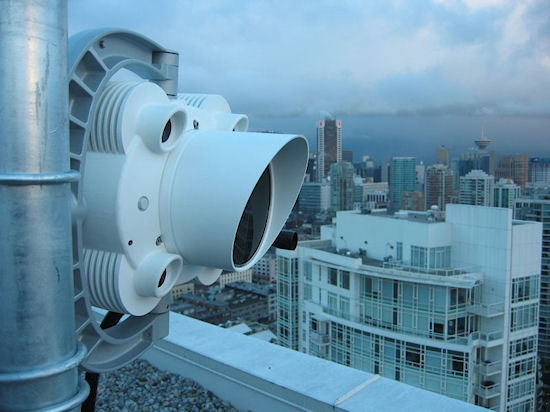Calculated risk
In one sense, FSO is the best of both worlds; the bandwidth of optical without the cost of laying new cable, but it also has its limitations. Firstly, being optical, it requires a line-of-sight connection, meaning it's no good for individual devices. Secondly, it has a maximum range of around 5 km, so it's not so good for rural networks.
But for urban areas, which is where networks face the greatest demands, it can be positioned on the top of buildings. This also solves the problem of the optical beam being interrupted as apparently the system can tolerate fleeting interruptions such as rain or birds flying through it.
Furthermore it uses completely different parts of the electromagnetic spectrum to regular wireless communications technologies, so you don't have the problem if limited amounts of spectrum and obscenely expensive auctions.
So, we asked fSONA CEO Andrew Grieve, if this technology is so great why isn't it used more extensively to solve mobile network bandwidth issues? "Our technology has some baggage with it," he conceded. "Five to ten years ago some carrier deployments promised a lot more than they delivered."
He stressed that this wasn't fSONA technology specifically and that one of its USPs is superior engineering to its competitors. So a few bad apples spoiled the reputation of FSO as a technology, it seems, and now fSONA is having to overcome that historical impression to convince mobile operators to give it another go. "We're in reintroduction mode to the carriers," said Grieve.
The reason Grieve thinks operators are ready to listen is the aforementioned backhaul crunch. While extra bandwidth might have seemed like a nice luxury ten years ago, it's a necessity now that will only become more pressing as 3G enabled mobile devices continue to proliferate and data-intensive services like video streaming are created for them. "They need to find solutions that work," he said.
So Grieve and fSONA still have a job on their hands convincing mobile network operators to take the plunge with this alternative technology; presumably that's why they were speaking to us. But if smart mobile devices reach the ubiquity they're expected to before long, the operators may well conclude that it's a risk well worth taking.














